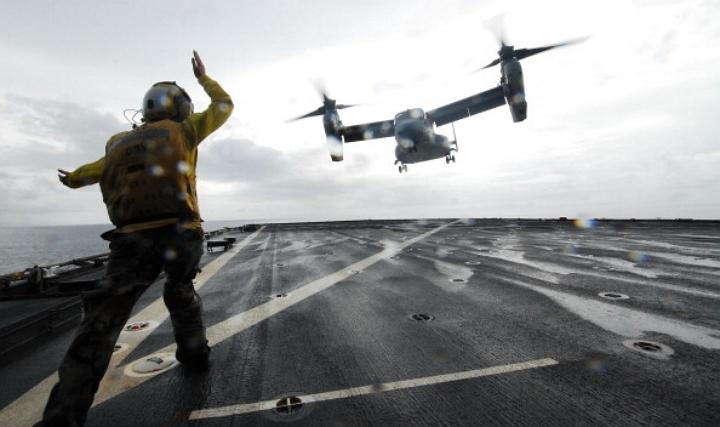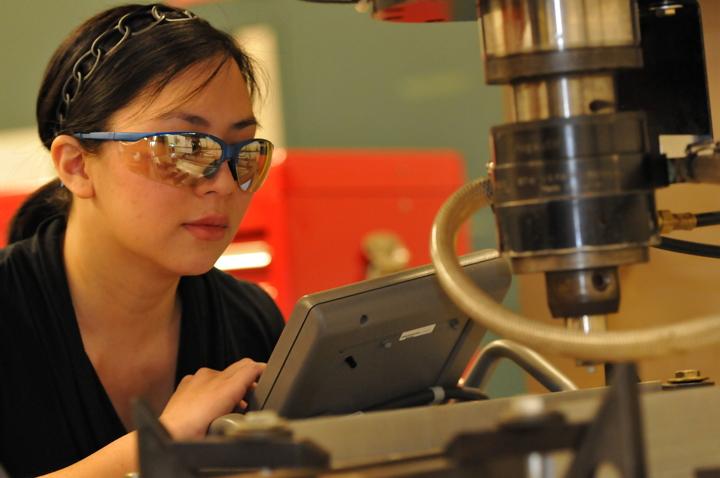In the next couple of weeks, the US Navy says they plan to outline their future plans and requirements for additive manufacturing technology to bolster “fleet readiness,” and the Office of Naval Research will roll out details of its Quality Metal Additive Manufacturing (Quality MADE) program.
They say the aim of the program is to “develop and integrate the suite of additive manufacturing software and hardware tools required to ensure that critical metallic components can be consistently produced and rapidly qualified in a cost effective manner.”
According to the Navy, additive manufacturing and 3D printing technology development is necessary to cut back on the the time and costs associated with deploying qualified and certified AM metallic components for use in Naval Air, Sea, and Ground platforms.
 The Navy currently uses additive manufacturing, but they say further development of the technologies will be required – particularly for analogs of titanium and aluminum used in casting processes.
The Navy currently uses additive manufacturing, but they say further development of the technologies will be required – particularly for analogs of titanium and aluminum used in casting processes.
In the future, the Navy says they’d like to actually have the capability to build parts onboard ships at sea for aircraft to avoid the challenge of storing components and large parts on ships and aircraft.
There are currently a variety of ongoing trials underway by the Navy to develop and evaluate 3D printing technology and materials for military uses.
Dr. Jennifer Wolk, the Naval Surface Warfare Center Additive Manufacturing Lead, says additive manufacturing has the potential to be a disruptive technology and shows great promise for supporting Naval Sea Systems applications.
“A great deal more needs to be done to ensure this technology can be qualified for repeatable, safe, and effective use,” Dr. Wolk says. “This cooperative research and development agreement is an important step toward broader utilization of this technology.”
Dr. Wolk recently briefed Chief of Naval Operations Admiral Jonathan Greenert on Naval additive manufacturing research during a tour of the Naval Surface Warfare Center Carderock Division facilities.
ONR Quality Metal Additive Manufacturing (Quality Made) Future Naval Capability Industry Day represents a pre-solicitation meeting with industry meant to describe and clarify the US government’s interests in metal additive manufacturing programs.
The meetings come in advance of a major announcement the Navy says will follow. They say these preliminary meetings and solicitations will potentially shape the future use of the technologies based on industry feedback. They say aging Naval platforms are faced with dwindling sources of supply, and that the current conditions “challenge readiness and cause unacceptable logistical delays.”
Tests of the processes will be developed by producing parts using two alloys and two AM processes. The two alloys of particular interest to the Navy are analogs of Ti-6Al-4V and Al-Mg-Si for castings. The process tests will use powder bed and directed energy AM systems to build the parts for evaluation.
Do you think this move by the Navy to test and solicit information from additive manufacturing industry experts signals a change in the future of government interest in the technology? Let us know in the Office of Naval Research forum thread on 3DPB.com.
Subscribe to Our Email Newsletter
Stay up-to-date on all the latest news from the 3D printing industry and receive information and offers from third party vendors.
You May Also Like
Precision at the Microscale: UK Researchers Advance Medical Devices with BMF’s 3D Printing Tech
University of Nottingham researchers are using Boston Micro Fabrication‘s (BMF) 3D printing technology to develop medical devices that improve compatibility with human tissue. Funded by a UK grant, this project...
3D Printing Webinar and Event Roundup: April 21, 2024
It’s another busy week of webinars and events, starting with Hannover Messe in Germany and continuing with Metalcasting Congress, Chinaplas, TechBlick’s Innovation Festival, and more. Stratasys continues its advanced training...
3D Printing Webinar and Event Roundup: March 17, 2024
It’s another busy week of webinars and events, including SALMED 2024 and AM Forum in Berlin. Stratasys continues its in-person training and is offering two webinars, ASTM is holding a...
3D Printed Micro Antenna is 15% Smaller and 6X Lighter
Horizon Microtechnologies has achieved success in creating a high-frequency D-Band horn antenna through micro 3D printing. However, this achievement did not rely solely on 3D printing; it involved a combination...
































